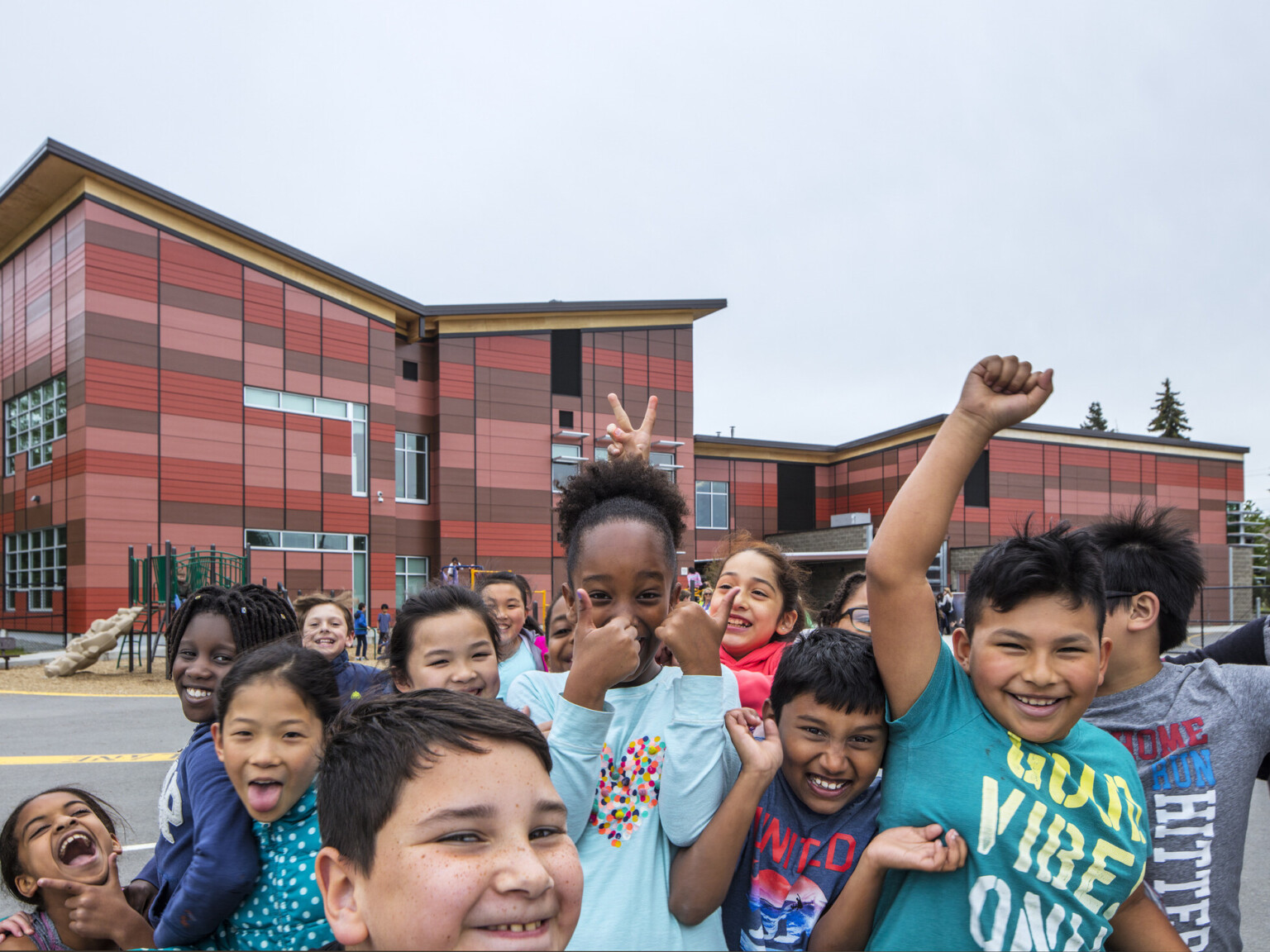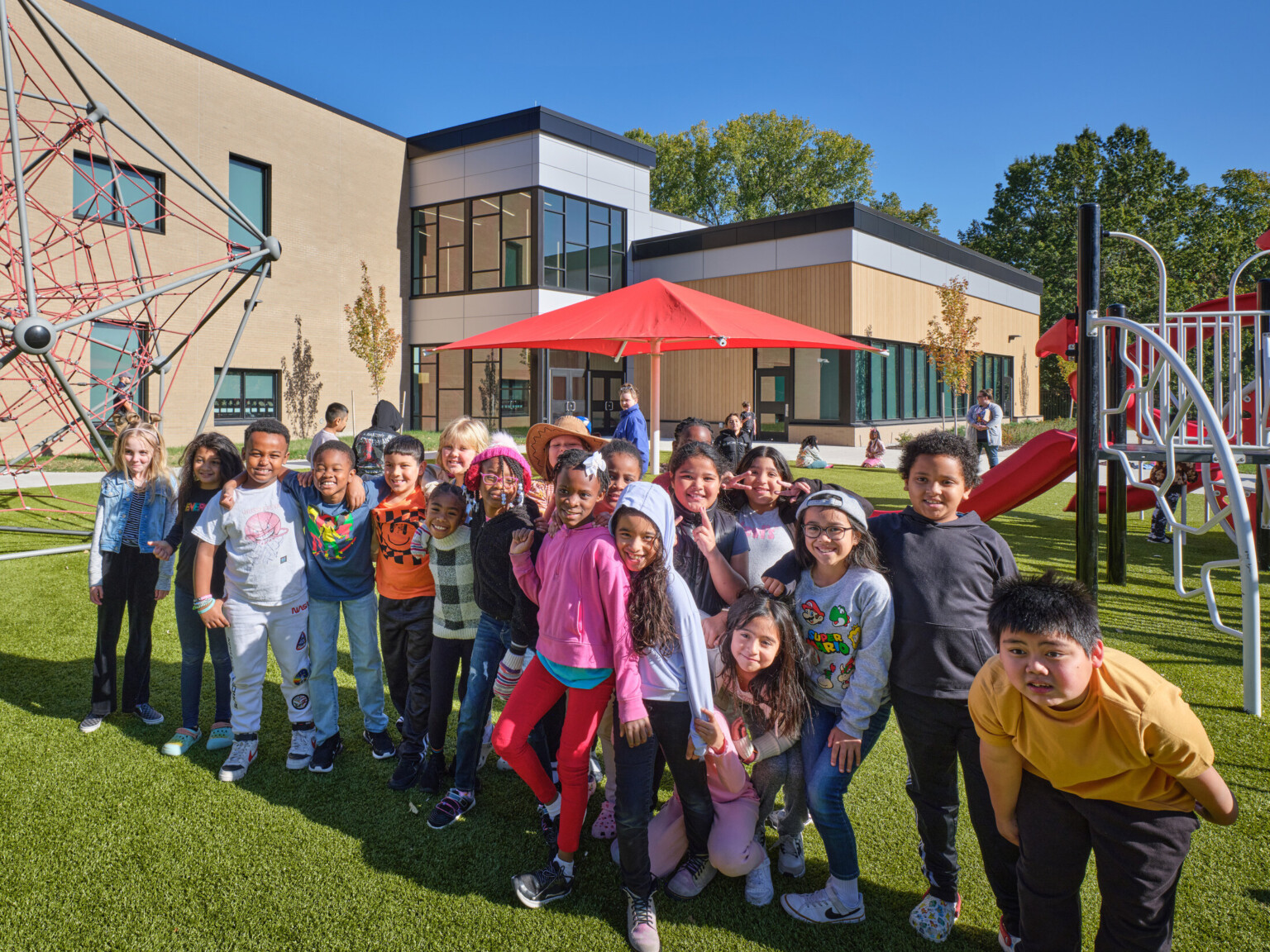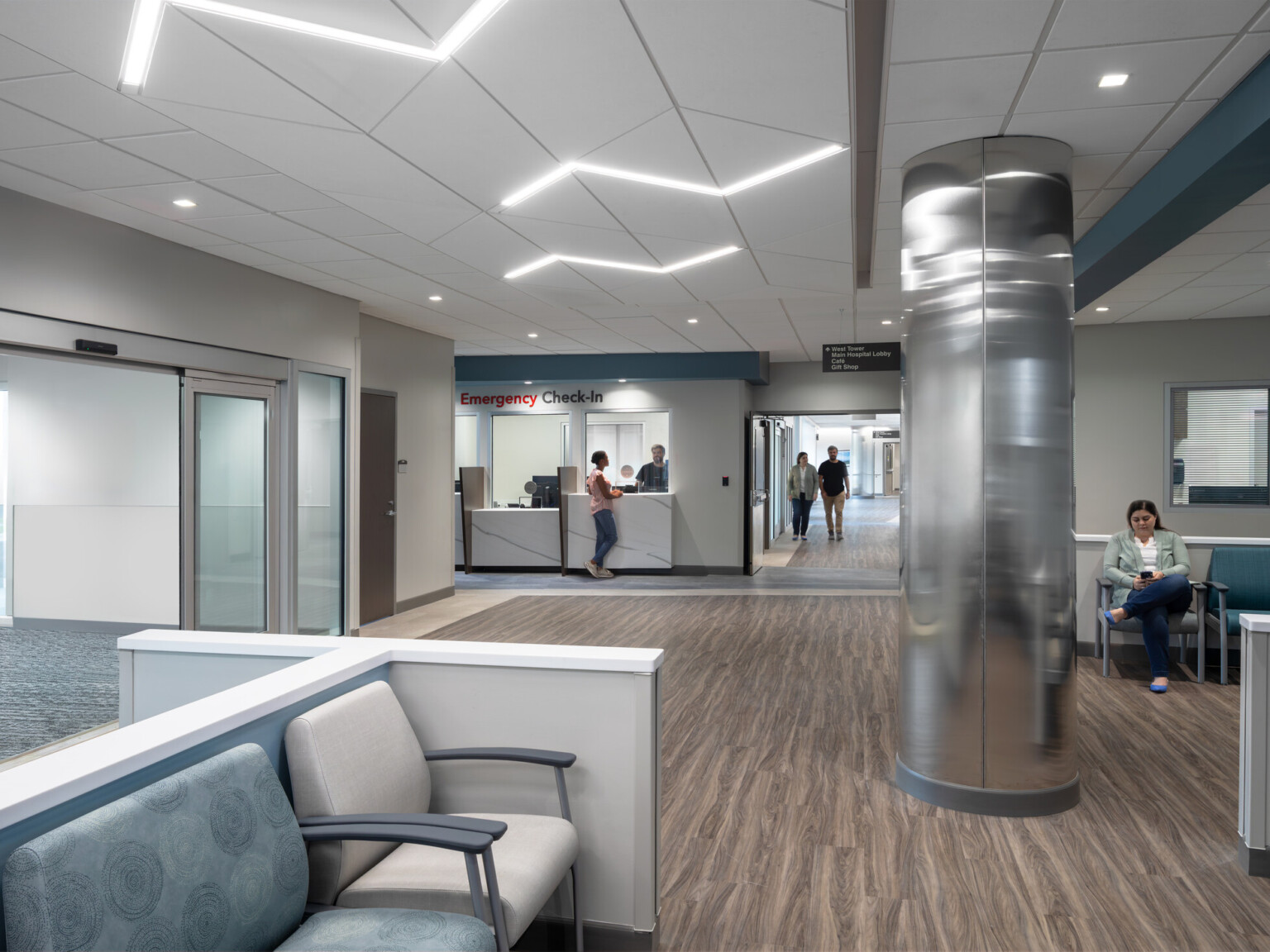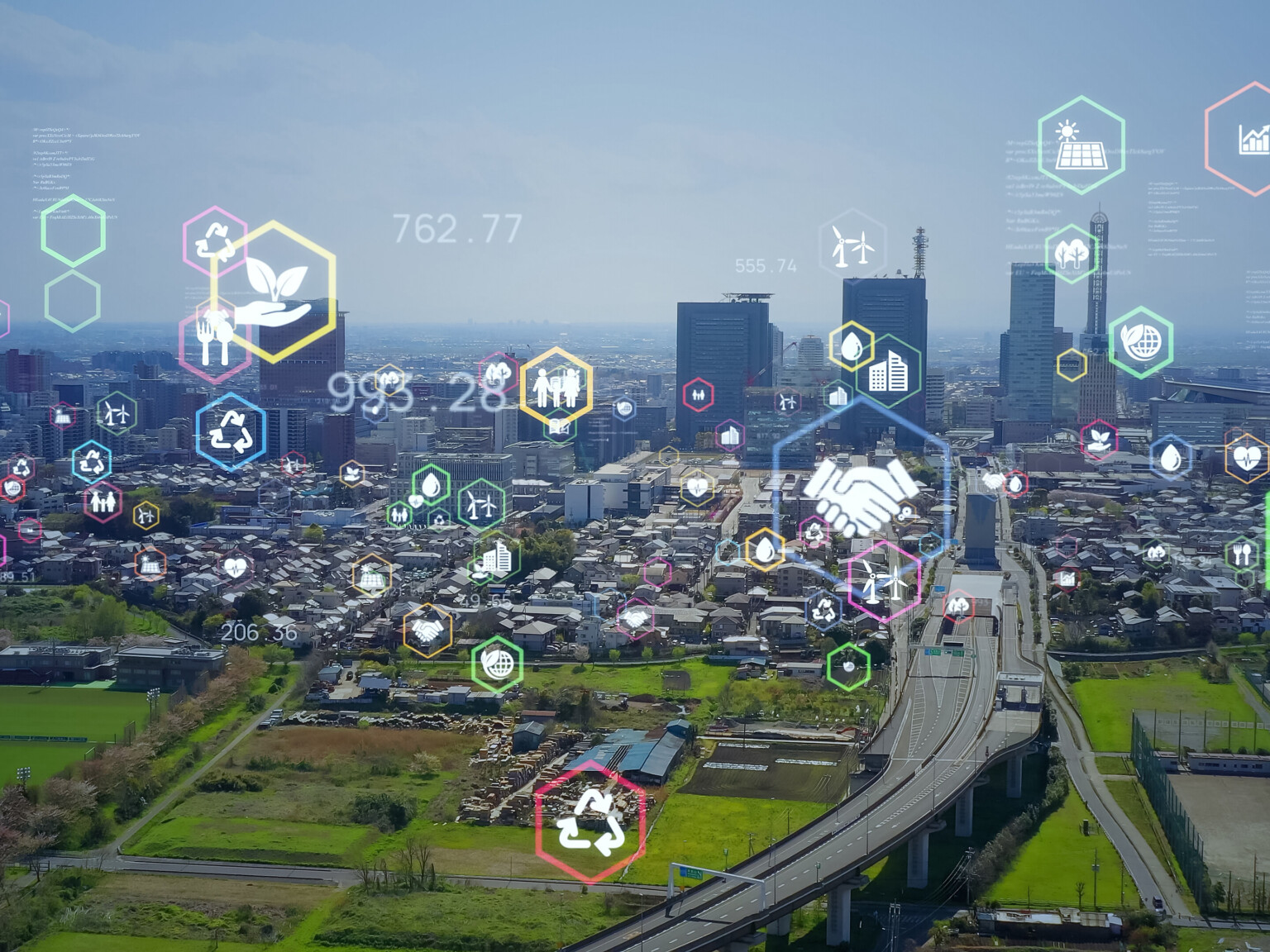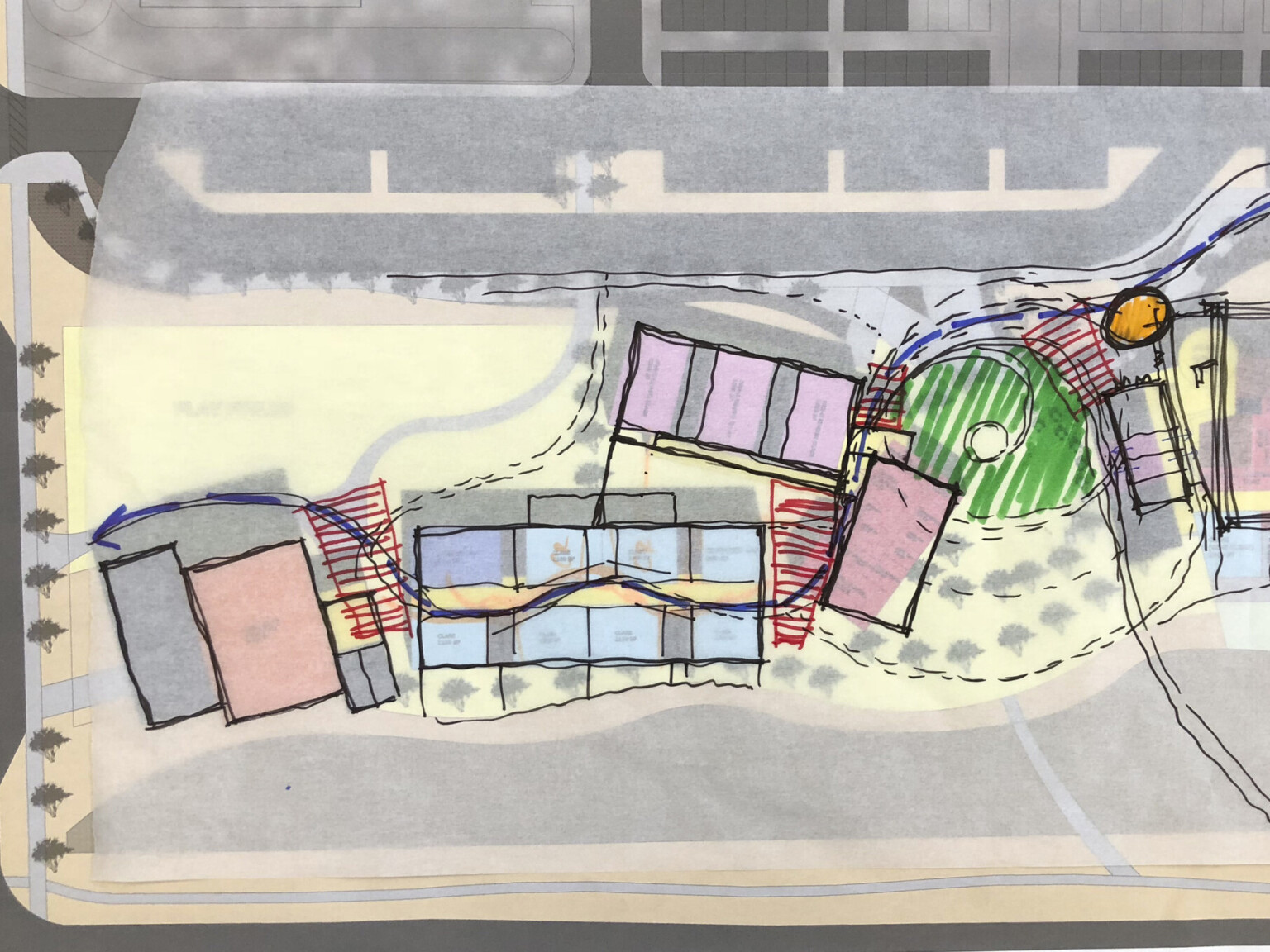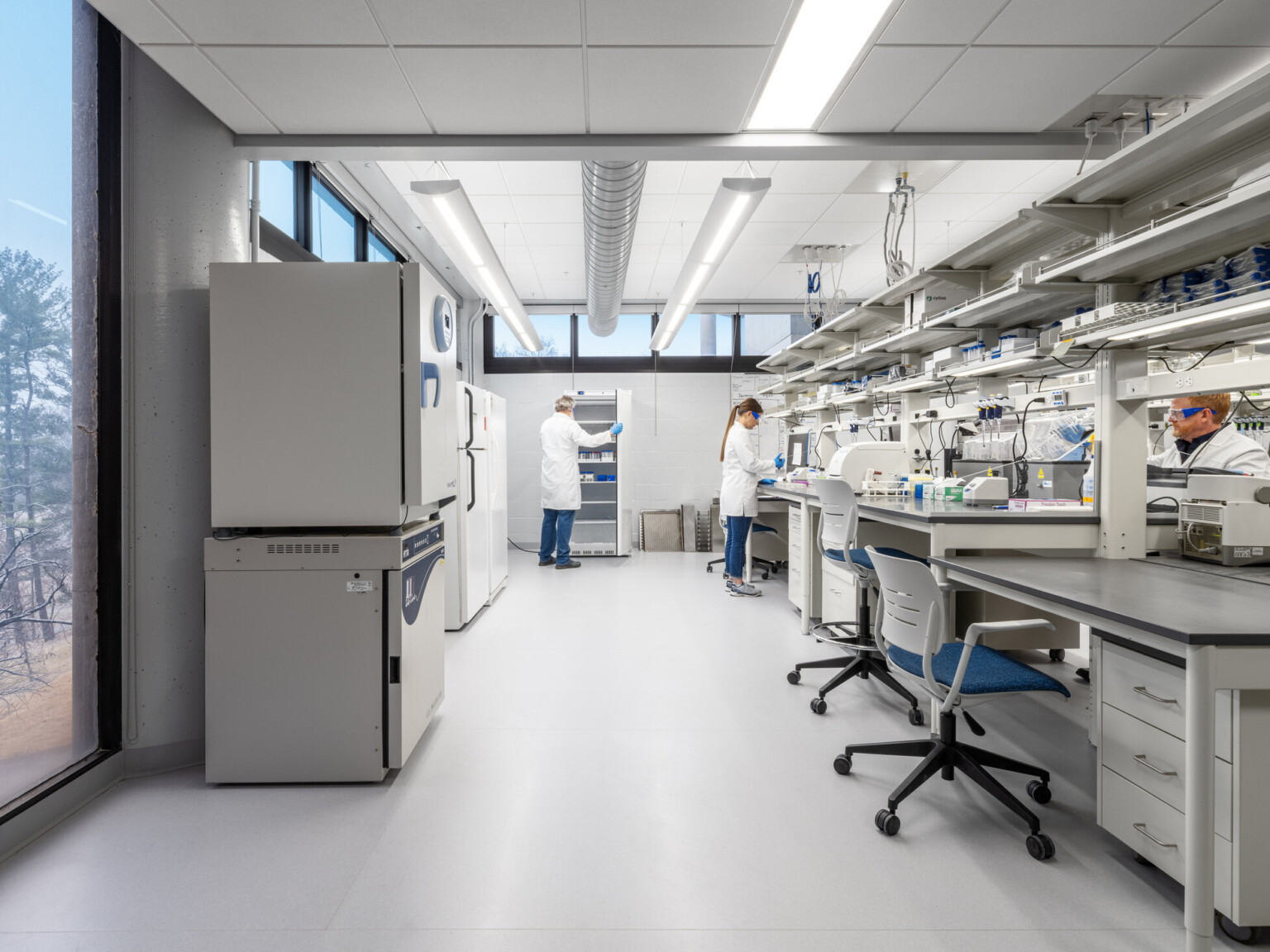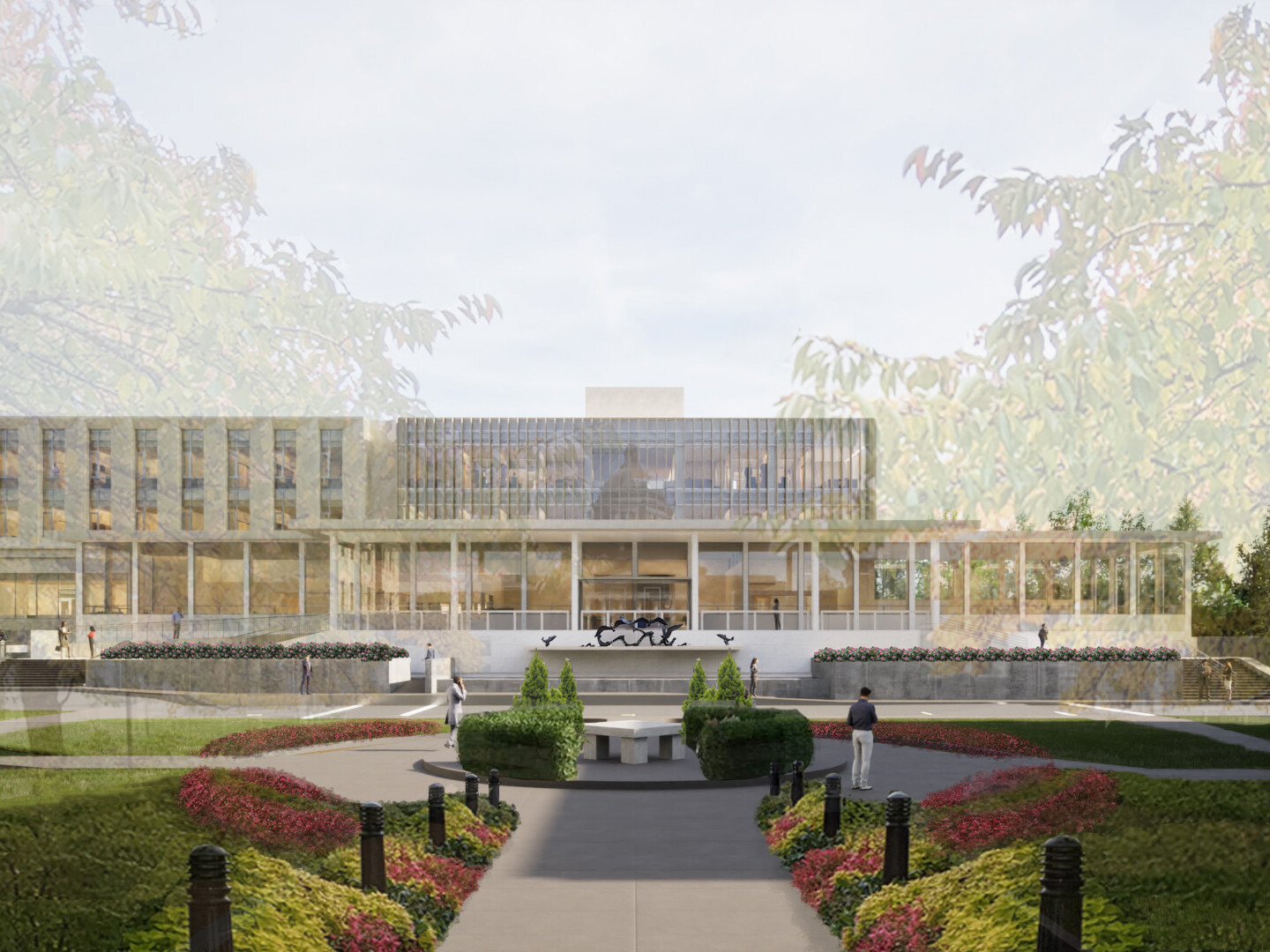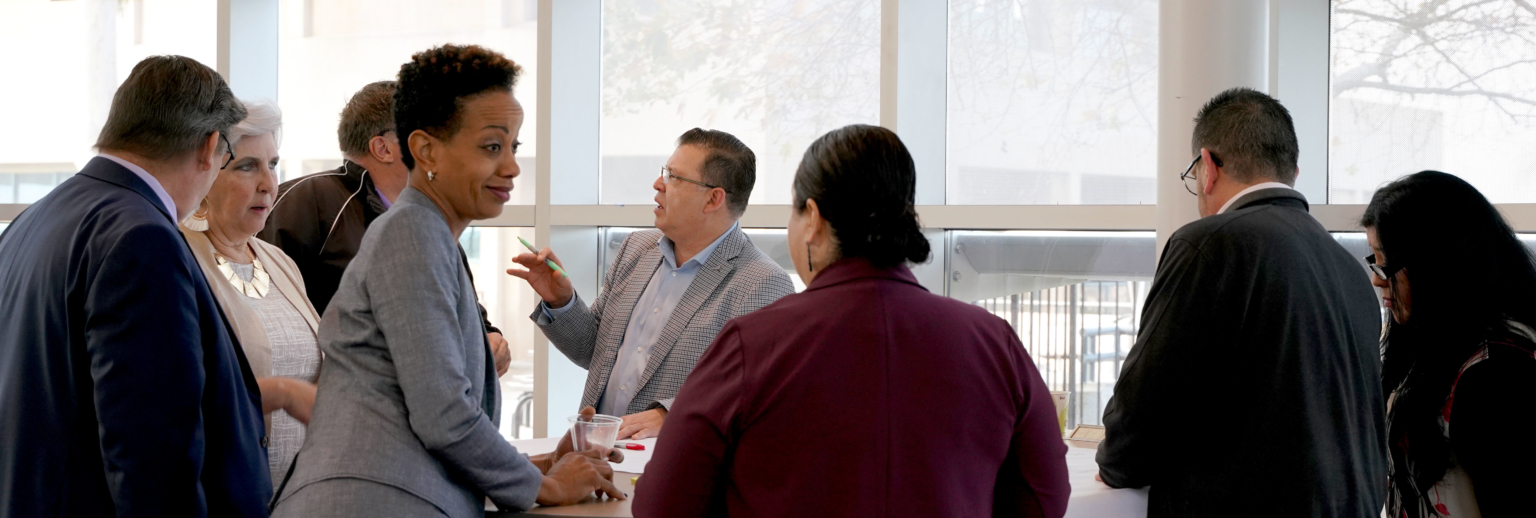
Town and Gown Relationships: Key to Higher Education Resiliency
The economic, environmental, and social justice impacts of the pandemic have taught higher education institutions and their communities a critical lesson: active collaboration and communication are necessities to overcome extreme events; move from surviving to thriving; innovate around shared interests; and provide new levels of trust and wellbeing. For centuries, colleges, universities, and cities have walked a tightrope between conflicting and supportive interests. The annual influx of students, services, programs, and special events has brought financial opportunity – as well as cultural and neighborhood tensions. For perhaps the first time in history, pandemic-exposed vulnerabilities have propelled town and gown partners to recognize their essential synergies, strengthen their relationships, and rely on each other as never before.
To better understand how the conditions of today will impact the campus of tomorrow, we implemented its 360-degree engagement process to conduct personal conversations across 85 colleges and universities. Our interviews uncovered numerous ways that the pandemic has changed town and gown relations for the foreseeable future.
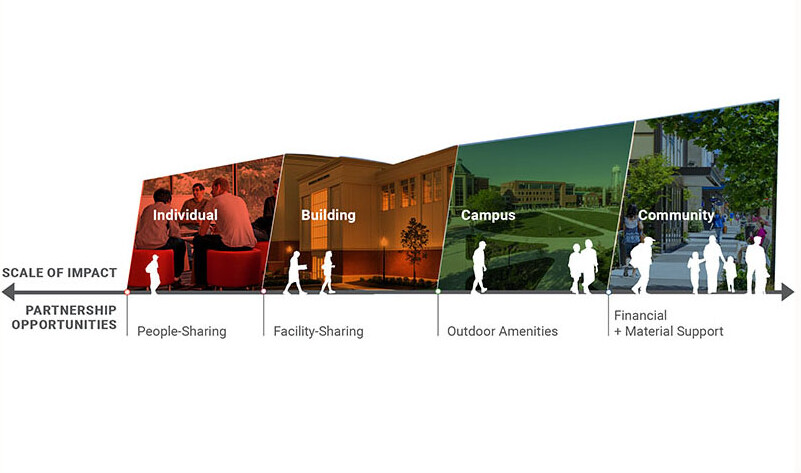
The pandemic has promoted partnerships in four distinct categories to address immediate needs and provide positive lasting impacts: funds and supplies, people, facilities, and outdoor amenities.
Financial and Material Support
Institutions are providing a wide range of funding, supplies, and programs to meet campus and community needs. Innovative opportunities include donating personal protective equipment and chemical supplies for testing, finding grants for technology, and gathering materials for educational and outreach programs, Many institutions are also reviewing tuition offsets to help keep enrollment steady, remain a primary employer of the communities in which they reside, and contribute to reopening the local business economy.
At the statewide level, the Tennessee Higher Education Commission provided an exemplary success story from the early pandemic response. The organization served as the coordinating agency between 51 institutions across 95 counties to provide and distribute head bands and face shields for first responders – essentially guaranteeing a statewide distributed supply chain. THEC distributed a 3D printing model for prototyping, assigned a centrally located university with the technical know-how to consolidate and assemble PPE, provided logistics for collecting bulk quantities of manufactured components, and delivered materials to an emergency management agency to ensure a distributed supply chain. In addition, the state agency worked with community partners to find the best sources for acetate and garnered donations from industry.
At a more local scale, community colleges long-term dedication to providing equitable access to education and amenities to underserved students and neighbors in their districts manifested physically. As campuses and businesses shut down, these institutions were more committed than ever to responsibly caring for their community. Senior administrators found corporate partners to fund laptops for students, delivered materials for online programs, and ensured access to critical information for health and learning. They also provided free Wi-Fi on campus property, developed and stocked food pantries, and delivered healthy food to neighbors.
People-Sharing aka Brain Capital
Institutional thought leadership and organizational skills have filled gaps in community services, staffed testing sites, and administered new healthcare field facilities. Students have donated their time and ingenuity to meet community needs. Creative ideas range from an app that generates recipes based on a photo taken of ingredients on hand in the pantry to organizing a phone-a-friend program to connect with senior citizens impacted by social distancing guidelines and stay-at-home orders.
The opportunity for sharing knowledge rose to even higher levels at land grant and research-intensive universities. Faculty and principal investigators created prototypes for low-cost ventilators and developed some of the first saliva-based COVID-19 tests. Health science faculty and staff were also invited to serve on local COVID-19 task forces to provide strategic depth and insight.
Facility Sharing
Where pre-existing, deep-rooted community partnerships were in place, broad resiliency planning combined with emergency management and economic recovery efforts. Institutions pre-planned for repurposing residential, academic, research, and special event facilities in unforeseen ways to address short-term public health concerns. These strategies also looked ahead – allowing spaces to flip to welcome students and staff back when campuses reopen. From Alaska to Florida, labs were converted seemingly overnight to produce sanitizer for public and hospital distribution.
An exemplary pandemic response shared by Franklin & Marshall College and Lancaster General Health, Penn Medicine evolved from almost 15 years of concerted town and gown collaboration over multiple changes in leadership. The campus Alumni Sports & Fitness Complex was planned with Lancaster General Health to convert to a post-acute care facility. The New College House Student Residence was utilized by medical staff and emergency responders to house themselves away from their families. To ensure campus and community preparedness, the campus doctor from the Lancaster General Health and Wellness Center shared updates and guidance on the local pandemic’s situation. Plans were also finalized, if needed, to empty a residence hall for an in-situ campus hospital to accommodate any student testing positive for the coronavirus, provide a floor for isolation, and another for quarantine.
Outdoor Amenities
Campus outdoor space continues to be offered for community use in multiple ways – access to nature for mental health and well-being, fresh air for disease prevention, gardening areas for food production, and gathering space that is flexible for social distancing while meeting in groups. The evolving balance between controlled and open access is still being determined based on context and population density. Some institutions we interviewed restricted access after experiencing overuse, habitat destruction, vandalism, squatting, and hazards to personal safety. Other institutions opened their campus grounds, arboretums, and access to trails to the public. Many instituted procedures for reserving timed access, providing one-way pedestrian and vehicular loops, and expanding virtual access to various collections.
With the proposed reopening of campuses for fall 2020, access to open space will be more important than ever. Both small liberal arts colleges and large state universities are exploring the capacity and capability to host outdoor events, instruction, and reflection space. Investments in a constellation of supportive landscapes is justified. Permanent support structures, flexible furnishings, shading and solar heating, IT access, and appropriate lighting will be resources for both students and neighbors to enjoy. Conversely, as students live and recreate off-campus, the public realm of sidewalks, parks, and plazas will be essential to augment the campus experience.
The future of town and gown relationships moving forward will be more collaborative, communicative, and resilient. Whether urban or rural, large or small, astute communities and institutions will jointly develop policies for ensuring public health and student responsibility. Local retail, businesses, neighborhoods, and schools will benefit from an infusion of support that comes from student service, internships, and patronage. Faculty will shift from applied to engaged learning and research – where the proof of accomplishment is real community change. Auxiliary services will be structured to serve student and community needs. Dual-use facilities will be planned to provide both the essential functions of the institutional mission as well as mitigate and adapt unforeseen events.
As the pandemic passes, the most successful marriages between higher education campuses and surrounding commercial and residential neighborhoods will have blurred boundaries, optimized shared spaces, and combined human and financial capital to ensure social, economic, and environmental wellbeing.
This narrative was completed as part of The Evolution of Campus research project and co-authored by Krisan Osterby.
